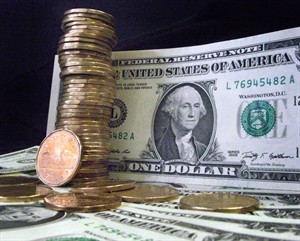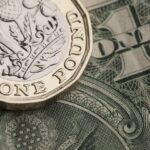 The loonie, as the Canadian dollar is best known, declined to the weakest level in three weeks against its US counterpart, after data revealed Canadian retail sales declined the most in a year in December.
The loonie, as the Canadian dollar is best known, declined to the weakest level in three weeks against its US counterpart, after data revealed Canadian retail sales declined the most in a year in December.
USD/CAD touched a session high at 1.1196 at 13:30 GMT, after which consolidation followed at 1.1151, adding 0.46% for the day. Support was likely to be received at February 20th low, 1.1061, while resistance was to be encountered at January 31st high, 1.1224, also the pairs strongest since July 2009.
The loonie weakened after a report showed the nations retail sales registered the largest one-month decline in a year. Retail sales declined 1.8% to 40.2 billion Canadian dollars or $36 billion in December, while analysts predicted a 0.4% drop. In November, retail sales increased by 0.5%.
“The possibility that today’s retail sales and CPI prints could be weak has the potential to undermine the Canadian dollar further,” Morgan Stanley strategists led by head of global currency strategy Hans Redeker in London wrote in a client note ahead of the report, cited by Bloomberg.
However, a separate report provided some support to the Canadian currency, as it showed the nations inflation rate accelerated at a 1.5% annualized rate in January, which is the highest pace in 1-1/2 years amid surge in home heating costs.
Statistics Canada reported on February 19 that wholesale sales declined 1.4% to 49.6 billion Canadian dollars ($45.3 billion) in December, in comparison with a 0.4% decrease estimated by experts. November’s reading received downward revision to a 0.2% drop.
The eastern parts of Canada were hit by a severe ice storm in December, which caused power outages and left thousands of homes in Ontario, Quebec and the Atlantic provinces without electricity.
According to Bank of Montreal chief economist Doug Porter, cited by Bloomberg, the Canadian gross domestic product probably shrank in December because of the storm.
The Canadian economy is struggling to recover from an almost two-year slowdown and the latest reported data did show that the economy grew at an annualized 2.7% pace in the third quarter. However, economists surveyed by Bloomberg News predict that growth slowed to 2.5% in the fourth quarter, ahead of Statistics Canada quarterly GDP report, scheduled to be released on February 28.
Meanwhile, the minutes of Federal Reserve Bank’s policy meeting on January 28th-29th showed that several policy makers said in “the absence of an appreciable change in the economic outlook, there should be a clear presumption in favor” of continuing to pare back the central bank’s monthly monetary stimulus by 10 billion USD at each meeting.
As the rate of unemployment decreases at a faster than expected pace, even while other labor-market indicators signal weakness, bank’s policy makers agreed that it would “soon be appropriate” to revise their guidance about the time horizon of record-low borrowing costs.
Federal Reserve President for St. Louis, James Bullard, and Fed President for Dallas, Richard Fisher are expected to take a statement later in the day, while Fed Chair Janet Yellen will attend a meeting of G-20 finance ministers and central bankers in Sydney.
Yesterday the Bureau of Labor Statistics in the United States said in a report that the index of consumer prices rose 0.1% in January compared to a month ago, in line with analysts’ estimates and after the index gained 0.2% in December. The annualized consumer price inflation came in at 1.6% last month, matching the median experts’ forecast and following a 1.5% increase in December.
Core consumer prices, which exclude the volatile food and fuel categories, also advanced 0.1% in January compared to the preceding month, while the annualized core consumer price inflation reached 1.6% in January.
Elsewhere, GBP/USD hit a session high at 1.6688 at 09:47 GMT, after which consolidation followed at 1.6670, adding 0.11% for the day. Support was likely to be received at February 13th low, 1.6600, while resistance was to be met at February 20th high, 1.6700. On February 17th, GBP/USD touched 1.6823, the strongest level since November 2009.





